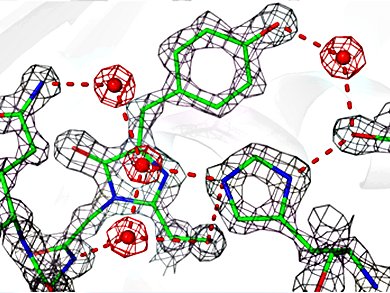One of the most important proteins in cell biology is affected by photoirradiation. Green fluorescent protein (GFP) and its numerous derivatives have been used for many years to study the distribution of proteins and other biomolecules within a cell or whole animal.
Gregor Jung and colleagues at Saarland University, Saarbrücken, Germany, have found that replacing one of the amino acid residues within the chromophore can stabilize the fluorescence of GFP against photoconversion. The glutamic acid residue at position 222 of GFP is essential for producing fluorescence, but was found to be replaceable by histidine, while maintaining strong fluorescence.
Histidine was chosen as a replacement for glutamate because of its similar pKa value, size, and ability to perform acid-base catalysis. The mutant GFP (here termed E222H) has nearly identical fluorescent properties to the native GFP but yet remains highly resistant to the bleaching effect seen upon irradiation of native GFP. This is most likely because the histidine residue cannot undergo decarboxlation in the same way that glutamate does.
E222H fluorescence was also shown to be stable over a wide pH range, making it a valuable new fluorescent tag for applications throughout cell biology and biochemistry. This mutation is also likely to have the same effect on other related proteins, like red (RFP) or yellow (YFP) fluorescent proteins.
- Replacement of Highly Conserved E222 by the Photostable Non-photoconvertable Histidine in GF,
D. Auerbach, M. Klein, S. Franz, Y. Carius, C. R. D. Lancaster, G. Jung,
ChemBioChem 2014.
DOI: 10.1002/cbic.201402075




